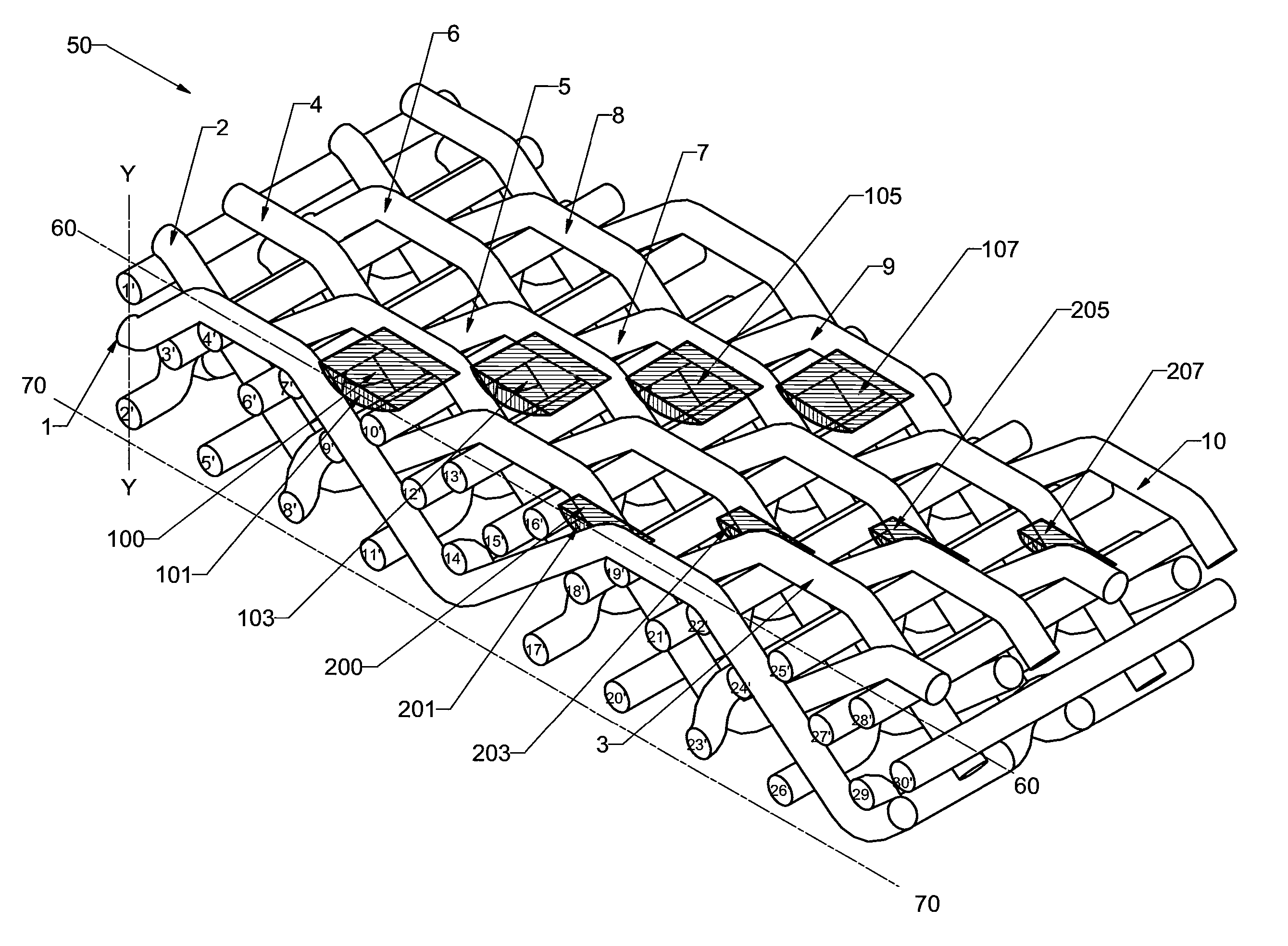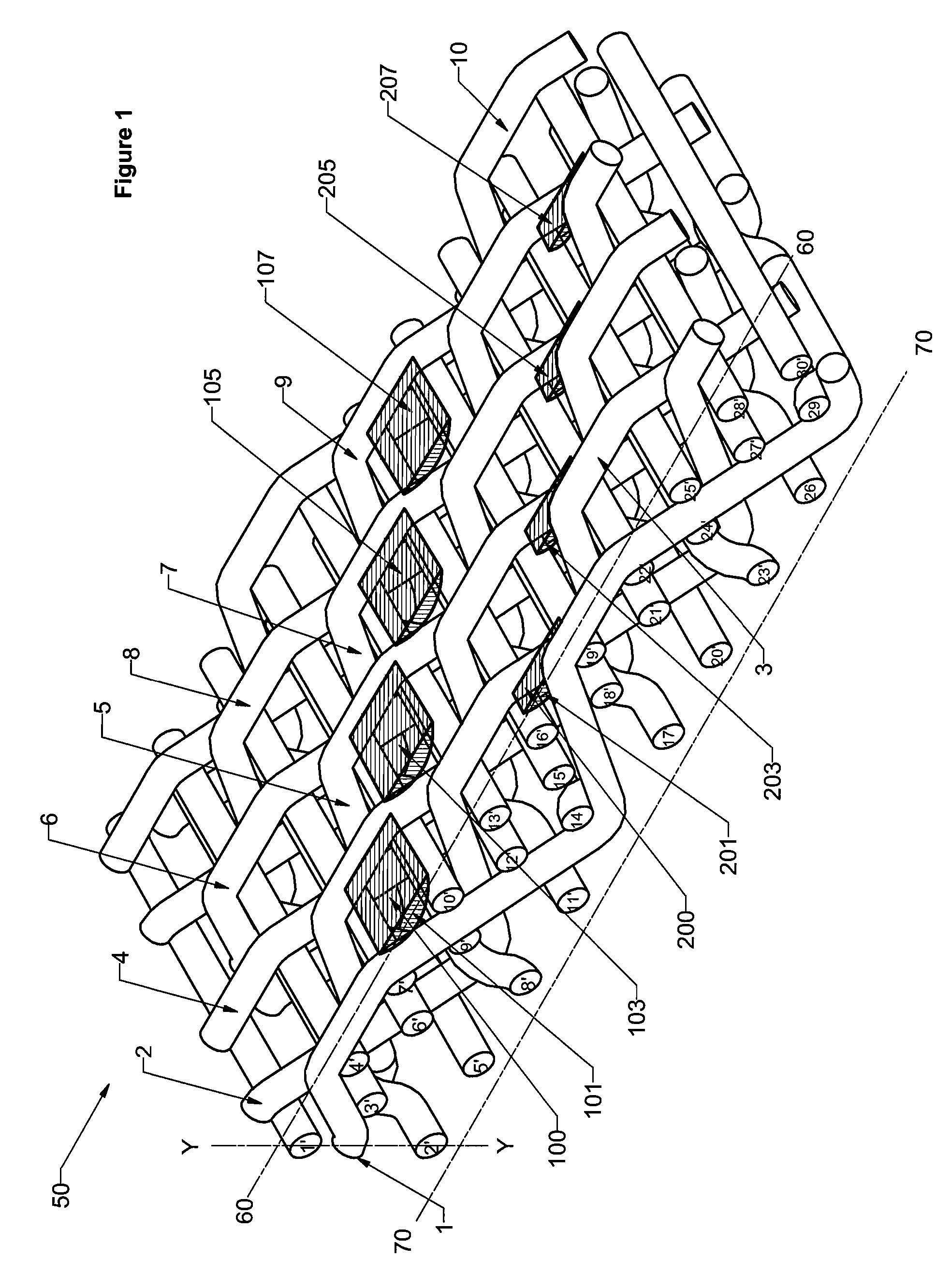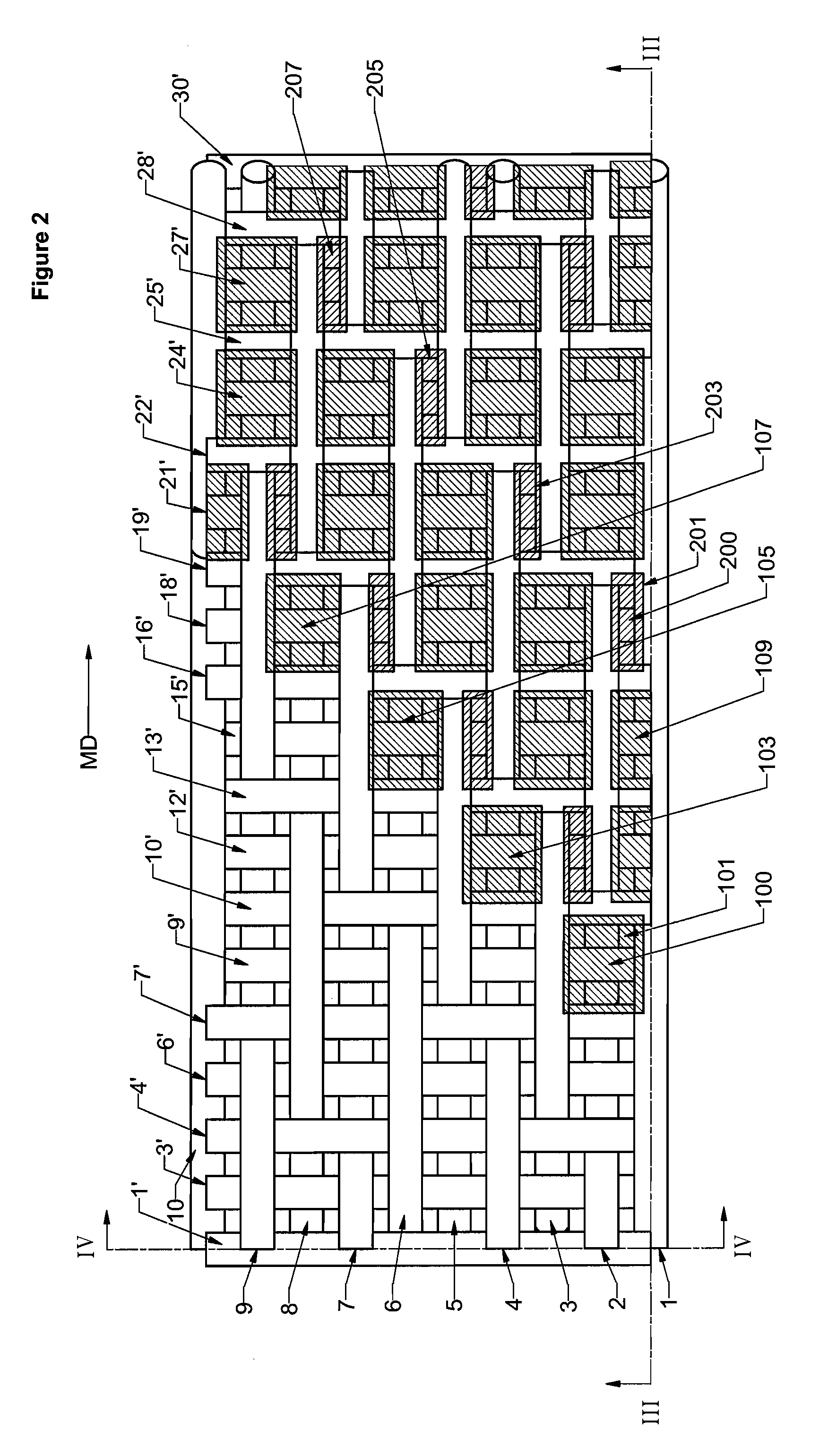Double layer papermakers fabric with pockets for bulk enhancement
a technology of papermaking fabric and bulk enhancement, applied in the field of papermaking fabrics, can solve the problems of fabric being more complex to weave, reducing the bulk and absorbency of the resultant sheet, and reducing so as to enhance the bulk of the sheet, reduce the permeability of the fabric, and improve the permeability
- Summary
- Abstract
- Description
- Claims
- Application Information
AI Technical Summary
Benefits of technology
Problems solved by technology
Method used
Image
Examples
first embodiment
[0030] Referring to FIG. 1, a perspective view of a fabric according to the invention is shown which is presently preferred and is generally designated as 50. In FIG. 1, the warp yarns are numbered from 1 to 10, and the weft yarns are numbered from 1′ to 30′. Weft yarns of the first weft yarn system are numbered 1′, 4′, 7′, 10′, 13′, 16′, 19′, 22′, 25′ and 28′ and are interwoven with the warp yarns 1 through 10 to form a first generally planar surface 60 of the fabric 50 which, when in use, generally contacts a paper sheet being carried by the fabric and is thus the PS. Weft yarns of the second weft yarn system are numbered 2′, 5′, 8′, 11′, 14′, 17′, 20′, 23′, 26′ and 29′ and are also interwoven with the warp yarns 1 through 10 to form a second generally planar surface 70 of the fabric 50 which, when in use, generally contacts the supporting rolls and drive rolls and is thus the MS of the fabric. Weft yarns of the third weft yarn system are numbered 3′, 6′, 9′, 12′, 15′, 18′, 21′, 2...
embodiment 50
[0041] Still with reference to FIG. 5, a distinct difference of the fabric 51 from the prior embodiment 50, is that the number of half pockets 200 has been effectively reduced through the creation of a second type of “full” pocket 300, which is has four PS warp knuckles defining the corners of the pocket. This is the result of the paired warp yarns 1, 2; 3, 4; 5, 6; 7, 8; 9, 10 in effect defining a single side of a pocket 300. For example the full pocket 301 has two PS warp knuckles defined by the float in warp yarn 1 over weft yarns 19′ and 22′. A third corner is defined by the PS warp knuckle of warp yarn 3 over weft yarn 22′, and the fourth corner is defined by the PS warp knuckle of warp yarn 4 over the weft yarn 19′. A number of this type of full pockets 300 have been designated in the Figure as 301, 303, 305, 307, 309, 31. While they have been illustrated with a trapezoidal shape for the sake of the drawings, those skilled in the art will recognize that this is used for illust...
PUM
 Login to View More
Login to View More Abstract
Description
Claims
Application Information
 Login to View More
Login to View More - R&D
- Intellectual Property
- Life Sciences
- Materials
- Tech Scout
- Unparalleled Data Quality
- Higher Quality Content
- 60% Fewer Hallucinations
Browse by: Latest US Patents, China's latest patents, Technical Efficacy Thesaurus, Application Domain, Technology Topic, Popular Technical Reports.
© 2025 PatSnap. All rights reserved.Legal|Privacy policy|Modern Slavery Act Transparency Statement|Sitemap|About US| Contact US: help@patsnap.com



